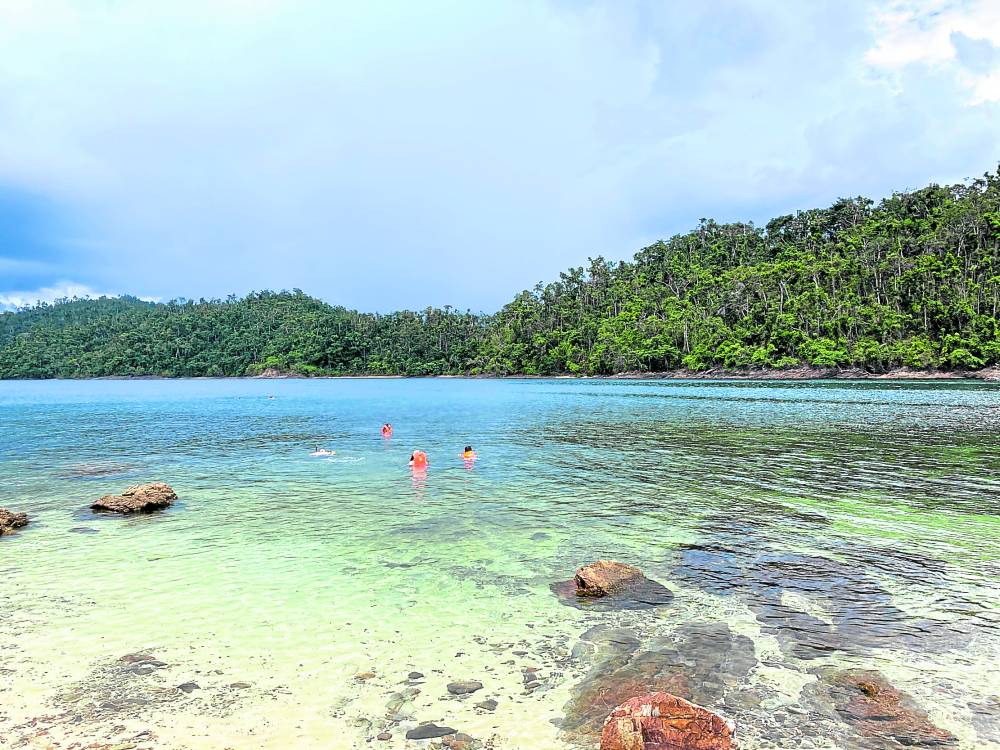
The world-renowned Underground River in Puerto Princesa, Palawan, remains the city’s most venerable attraction, being a United Nations Educational, Scientific and Cultural Organization (Unesco) World Heritage Site and a New 7 Wonders of the World.
As Philippine tourism gets rolling again, however, the city, specifically the 22,202-hectare Puerto Princesa Subterranean River National Park (PPSRNP) as well as its partner organizations, is suggesting some additions to the itinerary. These three community-based sustainable tourism (CBST) sites, for example, receive support from a Palawan stalwart, the Pilipinas Shell Foundation Inc. (PSFI), whose Turismo at Negosyo Dulot ng Ingat Kalikasan (Tandikan) project has been developing such sites in barangays within the park since 2015. We swung through them for a closer look.
Isla Filomena, New Panggangan
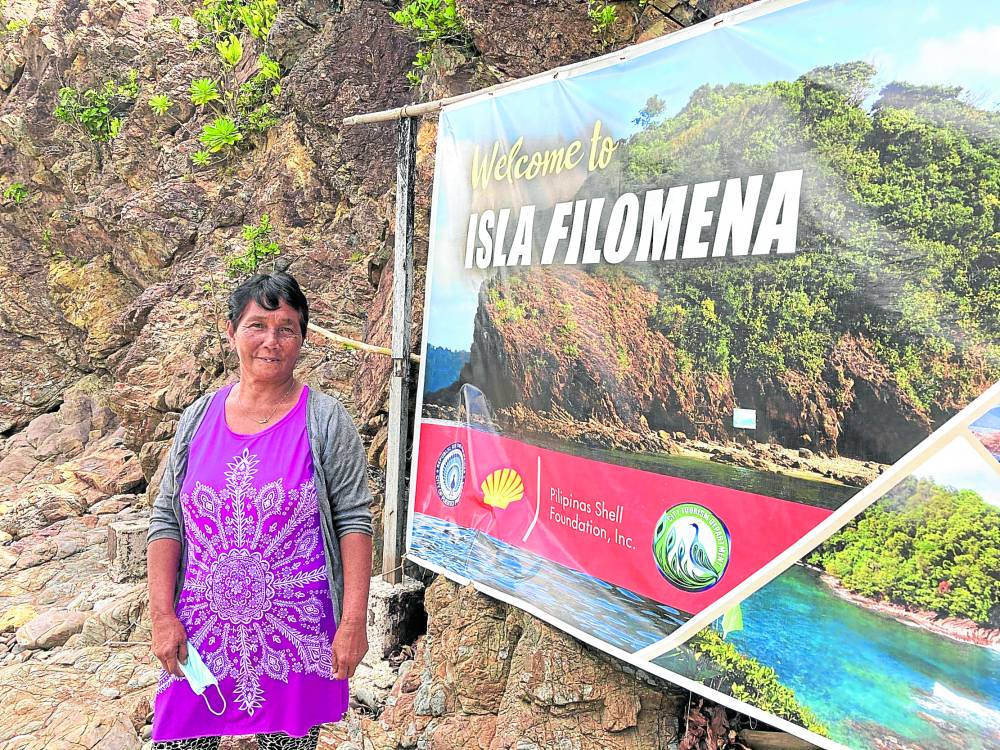
If you think Palawan has run out of isolated, tranquil islands, you’d be wrong. About 30 minutes by banca from the busy Sabang Wharf in Barangay Cabayugan is Isla Filomena in New Panggangan, a small uninhabited islet in the middle of a 1-ha sanctuary embraced by a cove, with clear water, corals and fish life. It’s the perfect getaway; there’s only a small rocky beach and no frills, but the quiet may be just your thing.
The site was formalized as a tourism destination when the local people’s organization (PO), Nagkaisang Samahan ng Isla Filomena Dive Site and Snorkeling sa New Panggangan, was established in 2016.
“The management of the park thought it would be easy for us, especially the women folk, to manage, as we can help guard the place and ask fishermen from other places with nets and compressors not to fish here,” says PO president Juanita Combinido in Filipino. “The barangay relies on this place, so we take care of our marine resources.”
There used to be a nice floating raft here out in the middle of the water, but Typhoon “Odette” blew that away, so the PO is in the process of rebuilding it. For P160 per head, you can frolic all day in privacy from 8 a.m. to 4 p.m., save for some locals standing by as lifeguards; PSFI and the City Tourism Office facilitated their training and certification in water search and rescue (Wasar), and they take their job seriously, swimming around snorkelers. Of a day’s income, half goes into the PO’s kitty and half goes to members on duty watching over the island for the day.
For an additional P200 per head and advance notice, the ladies will cook you a seafood lunch. We visited in the morning, but were still able to sample some of the products of the small bakery the PO established to tide the community over during the pandemic lockdowns: donuts, pancakes and breads, plus fresh coconut juice still in the shell.
For a respite from the water, climb about 10 minutes to the top of the island, for cool breezes and stunning views of the South China Sea and nearby Mount Bloomfield. (Contact Beth at tel. 0917-1571975; follow PPSRNP and World Heritage Site or Isla Filomena Dive Site on Facebook.)
Sabang mangrove tour

Mangroves are gravely underrated in this archipelago of ours, considering how important they are to our fishing industry.
“People don’t really understand their value,” agrees Celestino “Tinoy” Santander, president of the Sabang Mangrove Paddle Boat Tour Guide Association, speaking in Filipino. “They should put that in the elementary books. Fishing is our main resource, and this is the fish nursery. Mother fish come here to lay eggs. So if you catch a fish here which hasn’t laid her eggs, when you open her and find the bihod (fish eggs), that’s about 4,000 fish. What a waste. Otherwise, even your children and grandchildren could benefit. That’s why there’s no fishing here.”
The association has been in existence since 2000 but was formalized in 2008 by its first president, Aida Muyano, also known as “Lady Mangrove” for her advocacy. Santander succeeded her, and now organizes the 18 members who take visitors on tours of this 1.2-kilometer stretch of the Sabang River that is just a small part of the 47.55-ha mangrove area.
Santander is well-informed, and wearing a hat he wove from coconut tree leaves, this transplanted Bicolano talks to us about the brackish water that is brown from decomposing leaves (which feed the baby fish), the true mangroves and mangrove-associated trees like the talisay, and how 48,000 ha of the Philippines’ remaining 120,000 ha of mangroves are in Palawan.
“Maybe that’s why most of the country’s fish comes from here.” The entire province was actually declared a mangrove swamp reserve in 1981, by the way.
I personally love the smell, sights and sounds of mangroves, and knowing how those gnarly roots house growing fish makes them even more fascinating. During the quiet 45-minute ride, Mang Tinoy points out a century-old stand of mangrove trees, as well as a gorgeous sleeping mangrove snake, curled up on a branch. Sometimes you see monkeys, lizards, and flying squirrels, as well. All kinds of birds fly by, including a brilliant Palawan bluejay, and their calls, along with the chirping of cicadas and the slushing of the water against the boat paddle, make for a true symphony of nature.
Many trees were felled by “Odette,” Mang Tinoy says, and we see a number of them along the way, but the association is now in the process of clearing the area. PSFI also helped them establish a nursery for mangrove propagules, and trained some community members in farming as additional livelihood. (Text Celestino Santander at tel. 0935-6893919; follow Sabang Mangrove Paddle Boat Tour Guide Association on Facebook.)
Hundred Caves, Tagabenit
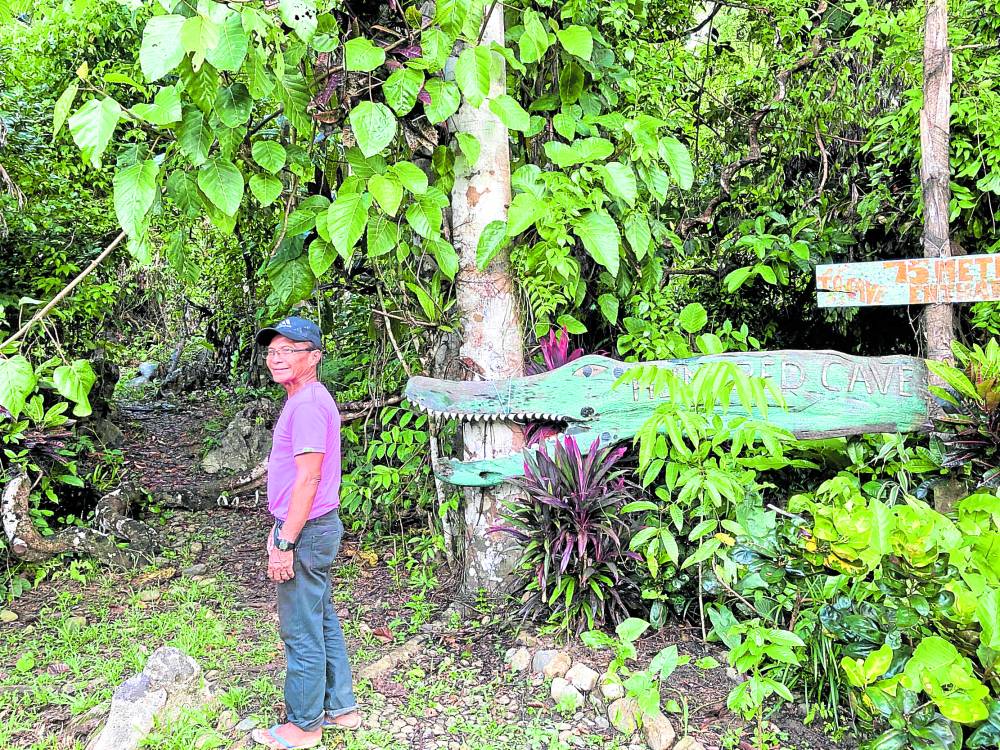
Is it really a hundred caves? “It could be more, or a little less,” says cave escort Art Hermoso in Filipino, with a laugh. “But you have all these interconnected passages, including small chambers where the balinsasayaw (swiftlets) have their nests. So that was the name that was registered with the Palawan Council for Sustainable Development (PCSD) in 2008, and since then it has been forbidden to harvest the birds’ nests.”
From the distance, you can’t quite tell what treasures are waiting in this quiet barangay; you do see the large rock rising in the distance.
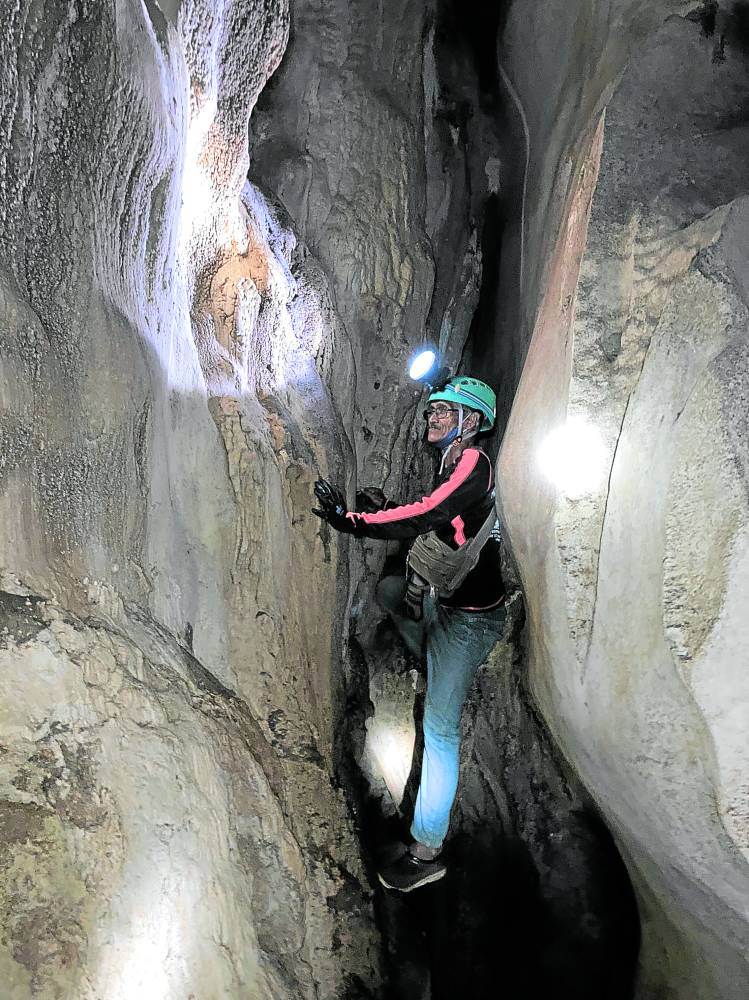
“We never really knew what was in there until it was surveyed by the PCSD and approved as a tourism destination,” recounts Mario Claud, president of the Tagabenit Neighborhood Tourism Association (Hundred Caves), in Filipino. As the story goes, a native Palau’an birds’ nest gatherer followed one swiftlet inside and discovered the caves. The place was eventually set up with ladders and footpaths, and started operations in 2014.
Claud divides income from the entrance fee (P450 for the regular tour, some 350 m and an hour into the cave, or P1,000 for a special, more challenging tour that goes for a kilometer) between the association’s kitty (40 percent) and members who show up to work or help maintain the reception area.
Claud thanks PSFI for flying in members of the Visayas Caving Association to train members in cave safety rescue. That’s because safety is a requirement for assistance, says PSFI executive director Marvi Rebueno-Trudeau. “
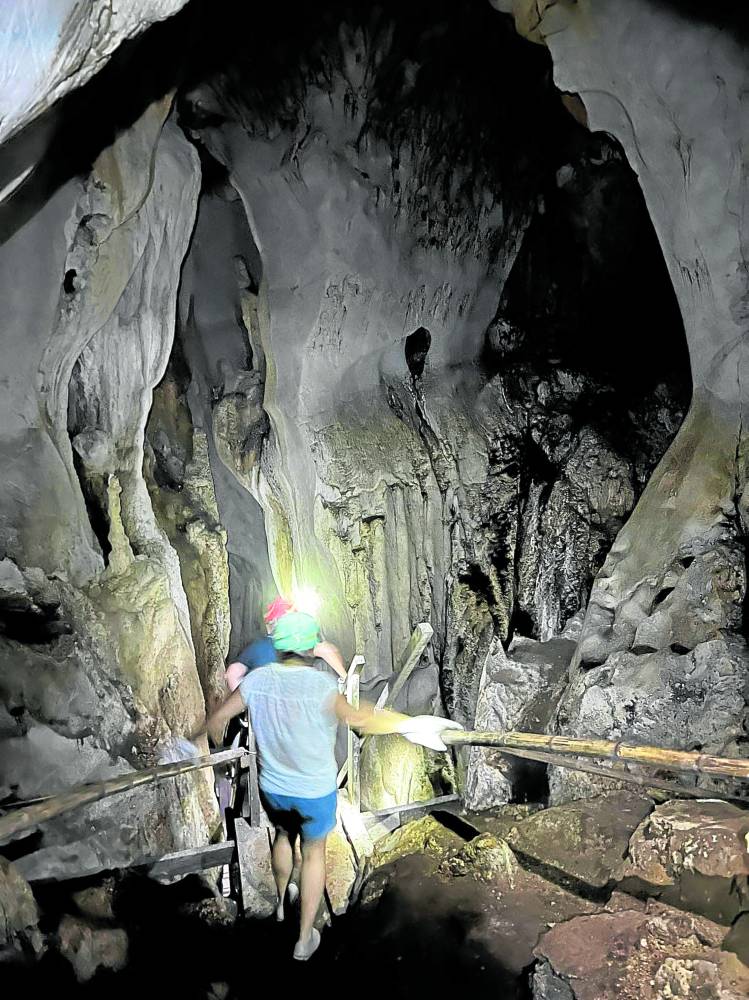
We have to check if the place is compliant to the law, and yes, we have a National Cave Law. So we sat down with the community and with PCSD. Caving is very risky, so we needed to upscale their skills on spelunking and give them equipment.”
Case study
Incidentally, when COVID-19 closed down the caves, as well as all other tourism in Palawan, the association was a case study on how to use your savings to sustain you. Using P40,000 in earnings and a P230,000 grant from the Department of Social Welfare and Development’s Sustainable Livelihood Program, Claud and company put up a small grocery store on the highway that supplied several communities’ daily food needs, which earned them some P30,000 a day. They even managed to distribute an extra P1,500 for each member last Christmas.
As for the caves themselves, it’s definitely a fantastic, highly recommended experience, although you have to be in decent enough shape to handle some climbing and scrambling. The guides hand out cotton gloves and rubber-soled shoes, but I suggest you come with your own climbing shoes and thick gloves; you’ll need them. We also got helmets with lights, and a wealth of information from the erudite and engaging Hermoso, who talked about the cave’s store of calcium, which appears like glittering droplets on the wall; the eight families of bats that live there; and the many gorgeous stalactites and stalagmites.
Touching walls with “live” calcium is discouraged—reverence and respect for nature are basic, anyway—but you will need to get on your hands and knees sometimes, so expect to get muddy despite steps, stairs, and ladders. The inside of the cave is dark and moist, and it’s unfathomable how long it took for those droplets of calcium-rich water to solidify into solid shapes. It was a great experience seeing age-old forms, nature’s own sculptures, and lots of life; there were even small holes where baby bats and nests of resident swiftlets could be found, complete with eggs! (Follow Hundred Caves on Facebook page.)








































